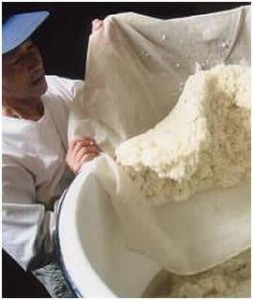After making the Koji rice, next step is making of Yest Mash Startar, Shubo, which is translated into Mother of Sake. We transfer the Koji rice to a middle size tank and add spring water and additional steamed rice, and let the mixture stand about two weeks, or until natural lactic acid is produced in the batch. Lactic acid makes the batch in the tank steril. Lactic acid bacteria itself will die eventually in the very strong acid environment. Then, yeast is added to the tank for multiplication. This is the making of Mother of Sake.
I am sure you heard the term “Kimoto” at the time of selecting and ordering sake at Japanese restaurants. When you ask “What does Kimoto mean?” you probably get a very short answer, that is “it is a sake made in a traditional way. It has strong flavor and delicious.” Well, this answer is not enought.
Sake made in Kimoto method includes the natural lactic acide production process. Since this process requires time, labor and careful attention, most of the sake breweries today switched to quicker method. They use commercially available lactic acid bacteria, which is added to a mixture of koji rice, steamed rice, spring water and yeast. The result is a big difference in flavor. Sake made in Kimoto method has deeper, slightly more acid and fuller taste. Kimoto, therefore, is my choice.
At the At the end of the yeast mash startar production when you scoop 1 teaspoon of the mash, it is said that you will find 100 million yeast cells in it. Mother of sake is strong and has to be strong for the next fermentation process!

